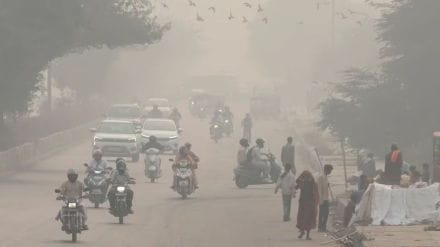Air Pollution: Delhi’s overall air quality has been in the ‘severe’ category for the past few weeks. While Friday’s rains may have given brief respite to residents of Delhi-NCr, the thick layer of smog may return. Persistent toxic smog has caused breathing issues to the citizens.
To address the heightened air pollution in Delhi, the government has been exploring the option of cloud seeding to generate artificial rain this month. Environment Minister Gopal Rai engaged in discussions with a team from IIT Kanpur on November 8 to explore the feasibility of introducing artificial rainfall in the city.
Following the meeting, Gopal Rai suggested that if the skies stay cloudy on November 20-21, Delhi might experience the initiation of artificial rainfall. This novel approach is aimed at addressing the concerns associated with the Air Quality Index (AQI) in the capital.
IIT-Kanpur experts prepared a detailed plan for artificial rain in Delhi. The proposal targets November 20 and 21, coinciding with a forecasted 40% cloud cover, a crucial condition for the process.
Once reviewed by the Delhi government, the plan will be presented to the Supreme Court, seeking cooperation from the Centre. If the Supreme Court approves, the first pilot project of artificial rain in Delhi could take place on November 20 and 21.
Environment Minister Gopal Rai emphasized the necessity of at least 40% cloud cover for the initiative to be effective. A meeting between Delhi government officials and IIT-Kanpur experts was held to discuss the artificial rain strategy.
What is artificial rain?
Artificial rain is a weather modification technique aimed at enhancing precipitation. It is also known as cloud seeding and the process involves the introduction of various substances into clouds to encourage the formation and growth of raindrops or ice crystals, ultimately leading to increased rainfall or snowfall.
Cloud seeding typically entails releasing substances into the air that serve as cloud condensation or ice nuclei. These substances, such as silver iodide, potassium iodide, or liquid propane, are chosen based on the cloud type and the desired outcome, whether it’s to trigger rain or snow.
The effectiveness of cloud seeding hinges on specific meteorological factors, such as the existence of moisture-laden clouds and favorable wind patterns. It aims to increase rainfall in targeted areas, addressing drought conditions and playing a crucial role in agriculture, environmental management, and water resource control.
How much will artificial rain cost Delhi?
Delhi Environment Minister Gopal Rai has urged Chief Secretary Naresh Kumar to coordinate with IIT Kanpur for a proposal on artificial rain. IIT Kanpur’s plan covers a 300 sqkm experiment in Delhi around November 20 or 21, scalable to 1,000 sqkm in the second phase, with costs estimated at ₹1 lakh per sqkm. It can be said that the estimated cost can be of ₹3 crore in the first phase and ₹10 crore in the second. The proposal aims to combat air pollution, with IIT Kanpur having a successful track record of cloud seeding in the past. The ministry plans to use specially modified aircraft for the pilot project, pending DGCA approval.
